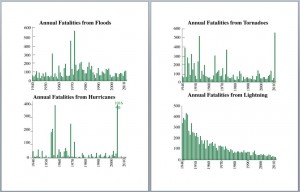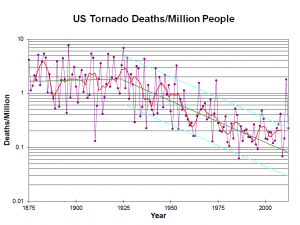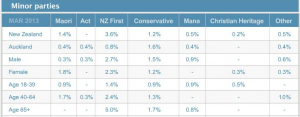Last night, 3News had a scare story about positive drug tests at work. The web headline is “Report: More NZers working on drugs”, but that’s not what they had information on:
New figures reveal more New Zealanders were caught with drugs in their system at work last year.
…new figures from the New Zealand Drug Detection Agency reveal 4300 people tested positive for drugs at work last year.
but
The New Zealand Drug Detection Agency says employers are doing a better job of self-regulating. The agency performed almost 70,000 tests last year, 30 percent more than in 2011.
If 30% more were tested, you’d expect more to be positive. The story doesn’t say how many tested positive the previous year, but with the help of the Google, I found last year’s press release, which says
8% of men tested “non-negative” compared with 6% of women tested in 2011.
Now, 8% of 70000 is 5600, and even 6% of 70000 is 4200. Given that the majority of the tests are in men, it looks like the proportion testing positive went down this year.
The worst part of the story statistically is when they report changes in proportions of which drug was found as if this was meaningful. For example,
When it comes to industries, oil and gas had an 18 percent drop in positive tests for methamphetamine, but showed a marked increase in the use of opiates.
That’s an increase in the use of opiates as a proportion of those testing positive. Since proportions have to add up to 100%, a decrease in the proportion positive tests that are for methamphetamine has to come with an increase in some other set of drugs — just as a matter of arithmetic.
Stuff‘s story from January just as bad, with the lead
Employers are becoming more aware of the dangers of drugs and alcohol in the workplace as well as the benefits of testing for them.
and quoting an employer as saying
“And, we have no fear of an employee turning up to work and operating in an unsafe way, putting themselves and others at risk.”
as if occasional drug tests were the answer to all occupational health and safety problems.
The other interesting thing about the Stuff story is that it’s about a different organisation: Drug Testing Services, not NZ DDA — there’s more than one of them out there! You might easily have thought from the 3News story that the figures they quoted referred to all workplace drug tests in NZ, rather than just those sold by one company.
Given the claims being made, the evidence for either financial or safety benefits is amazingly weak. No-one in these stories even claims that introducing testing has actually reduced on-the-job accidents in their company, for example, let alone presents any data.
If you look on PubMed, the database of published medical research, there are lots of papers on new testing methods and reproducibility of test results, and a few that show people who have accidents are more likely than others to test positive. There’s very little even of before-after comparisons: a Cochrane review on this topic found three before-after comparisons. Two of the three found a small decrease in accident rates immediately after introducing testing; the third did not. A different two of the three found that the long-term decreasing trend in injuries got faster after introducing testing; again, the third did not. The review concluded that there was insufficient evidence to recommend for or against testing.
There’s better evidence for mandatory alcohol testing of truck drivers, but since those tests measure current blood alcohol concentrations, not past use, it doesn’t tell us much about other types of drug testing.




